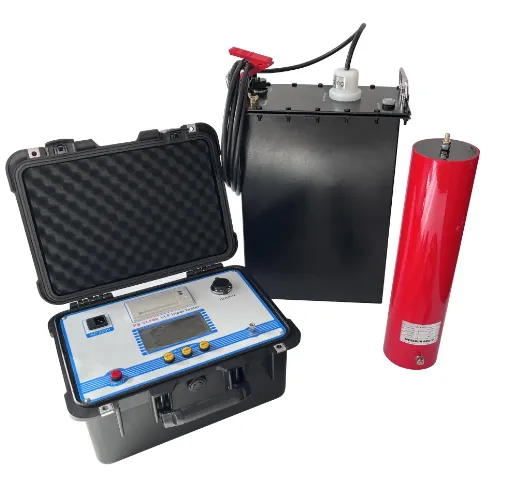TEL:
+86-0312-3189593
 English
English

Telephone:0312-3189593

Email:sales@oil-tester.com

-
 Afrikaans
Afrikaans -
 Albanian
Albanian -
 Amharic
Amharic -
 Arabic
Arabic -
 Armenian
Armenian -
 Azerbaijani
Azerbaijani -
 Basque
Basque -
 Belarusian
Belarusian -
 Bengali
Bengali -
 Bosnian
Bosnian -
 Bulgarian
Bulgarian -
 Catalan
Catalan -
 Cebuano
Cebuano -
 China
China -
 China (Taiwan)
China (Taiwan) -
 Corsican
Corsican -
 Croatian
Croatian -
 Czech
Czech -
 Danish
Danish -
 Dutch
Dutch -
 English
English -
 Esperanto
Esperanto -
 Estonian
Estonian -
 Finnish
Finnish -
 French
French -
 Frisian
Frisian -
 Galician
Galician -
 Georgian
Georgian -
 German
German -
 Greek
Greek -
 Gujarati
Gujarati -
 Haitian Creole
Haitian Creole -
 hausa
hausa -
 hawaiian
hawaiian -
 Hebrew
Hebrew -
 Hindi
Hindi -
 Miao
Miao -
 Hungarian
Hungarian -
 Icelandic
Icelandic -
 igbo
igbo -
 Indonesian
Indonesian -
 irish
irish -
 Italian
Italian -
 Japanese
Japanese -
 Javanese
Javanese -
 Kannada
Kannada -
 kazakh
kazakh -
 Khmer
Khmer -
 Rwandese
Rwandese -
 Korean
Korean -
 Kurdish
Kurdish -
 Kyrgyz
Kyrgyz -
 Lao
Lao -
 Latin
Latin -
 Latvian
Latvian -
 Lithuanian
Lithuanian -
 Luxembourgish
Luxembourgish -
 Macedonian
Macedonian -
 Malgashi
Malgashi -
 Malay
Malay -
 Malayalam
Malayalam -
 Maltese
Maltese -
 Maori
Maori -
 Marathi
Marathi -
 Mongolian
Mongolian -
 Myanmar
Myanmar -
 Nepali
Nepali -
 Norwegian
Norwegian -
 Norwegian
Norwegian -
 Occitan
Occitan -
 Pashto
Pashto -
 Persian
Persian -
 Polish
Polish -
 Portuguese
Portuguese -
 Punjabi
Punjabi -
 Romanian
Romanian -
 Russian
Russian -
 Samoan
Samoan -
 Scottish Gaelic
Scottish Gaelic -
 Serbian
Serbian -
 Sesotho
Sesotho -
 Shona
Shona -
 Sindhi
Sindhi -
 Sinhala
Sinhala -
 Slovak
Slovak -
 Slovenian
Slovenian -
 Somali
Somali -
 Spanish
Spanish -
 Sundanese
Sundanese -
 Swahili
Swahili -
 Swedish
Swedish -
 Tagalog
Tagalog -
 Tajik
Tajik -
 Tamil
Tamil -
 Tatar
Tatar -
 Telugu
Telugu -
 Thai
Thai -
 Turkish
Turkish -
 Turkmen
Turkmen -
 Ukrainian
Ukrainian -
 Urdu
Urdu -
 Uighur
Uighur -
 Uzbek
Uzbek -
 Vietnamese
Vietnamese -
 Welsh
Welsh -
 Bantu
Bantu -
 Yiddish
Yiddish -
 Yoruba
Yoruba -
 Zulu
Zulu
2 月 . 17, 2025 12:44
Back to list
PS-ZK03 Transformer Short Circuit Impedance Tester
Understanding battery impedance measurement is crucial for various sectors reliant on battery technology, including electric vehicles, renewable energy systems, and portable consumer electronics. This process involves quantifying a battery's internal resistance, which can reveal essential information about its health, state of charge, and overall performance.
Trustworthiness in discussing and implementing battery impedance measurement stems from consistent, accurate results validated through rigorous testing. Reputable institutions and laboratories frequently benchmark their methodologies against international standards, such as those provided by IEEE and ISO, to maintain credibility. Furthermore, companies with transparent reporting of test results and methodologies foster confidence among stakeholders and consumers alike. In practice, the sophisticated use of impedance measurement translates directly into enhanced product offerings. Manufacturers continuously leverage such data to engineer batteries with extended lifespans and superior safety profiles. For example, recent advancements in lithium-ion technology benefit extensively from precise impedance analytics, allowing for the development of cells with unprecedented energy densities and reduced risk of thermal runaway. As these technologies advance, the role of accurate impedance measurement becomes ever more critical in maintaining competitive advantages and fulfilling burgeoning market demand for reliable, high-performance batteries. Staying ahead in the rapidly evolving field of battery technology necessitates a nuanced grasp of physics, chemistry, and cutting-edge engineering practices. Expertise in battery impedance measurement represents a confluence of these disciplines, delivering tangible improvements to both product development and user satisfaction. As the technology continues to advance, those who excel in understanding and applying these measurements will lead the charge in creating the next generation of powerful, sustainable energy solutions.


Trustworthiness in discussing and implementing battery impedance measurement stems from consistent, accurate results validated through rigorous testing. Reputable institutions and laboratories frequently benchmark their methodologies against international standards, such as those provided by IEEE and ISO, to maintain credibility. Furthermore, companies with transparent reporting of test results and methodologies foster confidence among stakeholders and consumers alike. In practice, the sophisticated use of impedance measurement translates directly into enhanced product offerings. Manufacturers continuously leverage such data to engineer batteries with extended lifespans and superior safety profiles. For example, recent advancements in lithium-ion technology benefit extensively from precise impedance analytics, allowing for the development of cells with unprecedented energy densities and reduced risk of thermal runaway. As these technologies advance, the role of accurate impedance measurement becomes ever more critical in maintaining competitive advantages and fulfilling burgeoning market demand for reliable, high-performance batteries. Staying ahead in the rapidly evolving field of battery technology necessitates a nuanced grasp of physics, chemistry, and cutting-edge engineering practices. Expertise in battery impedance measurement represents a confluence of these disciplines, delivering tangible improvements to both product development and user satisfaction. As the technology continues to advance, those who excel in understanding and applying these measurements will lead the charge in creating the next generation of powerful, sustainable energy solutions.
Latest news
-
Testing Equipment Industry Sees Major Advancements in 2025: Smart & Precision Technologies Lead the WayNewsJun.06,2025
-
Applications of Direct Current Generators in Renewable Energy SystemsNewsJun.05,2025
-
Hipot Tester Calibration and Accuracy GuidelinesNewsJun.05,2025
-
Digital Circuit Breaker Analyzer Features and BenefitsNewsJun.05,2025
-
Benefits of Real-Time Power Quality Monitoring Devices for Industrial EfficiencyNewsJun.05,2025
-
Earth Fault Loop Testing in High-Rise Building Electrical SystemsNewsJun.05,2025



